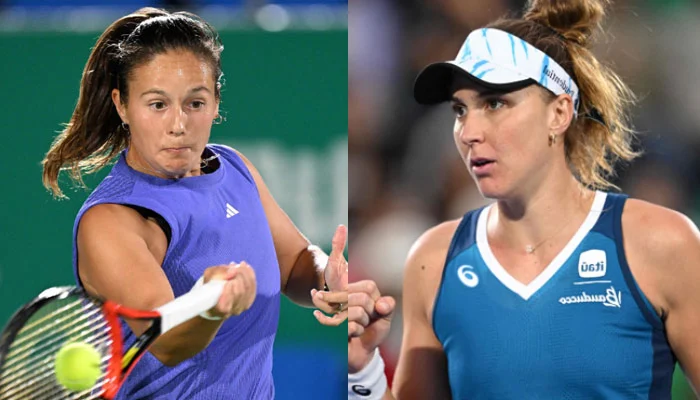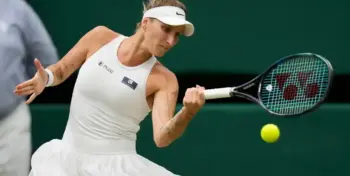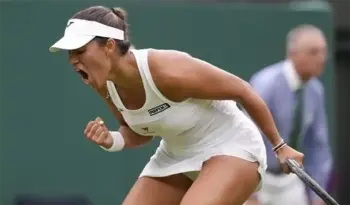The 2024 Korea Open has delivered some of the most intense and unpredictable tennis action of the year. The tournament, held annually in Seoul, South Korea, has long been a favorite stop for both emerging talents and seasoned pros looking to end their season on a high note.
This year’s edition is no exception, and it has all led to an exhilarating final between two formidable players: Daria Kasatkina and Beatriz Haddad Maia. Both players have had remarkable paths to the final, and their showdown made for a memorable match.
Daria Kasatkina: A Journey of Resilience
Daria Kasatkina, the 26-year-old Russian, had been a consistent presence on the WTA Tour for several years now. Known for her tactical intelligence, versatility, and ability to adapt to various surfaces, Kasatkina has built a reputation as one of the most well-rounded players in the game. Her journey to the 2024 Korea Open final was a testament to her resilience and ability to perform under pressure.
Kasatkina’s season leading up to the Korea Open has been a mix of highs and lows, but her odds of clinching the title were pretty good, as she went into the match with odds of -120 (1.83) at various online sportsbooks, which gave her a 42.54% chance of winning. Meanwhile, Maia was the favorite heading in as she was given a 57.46% chance of winning, equating to slightly better odds of -122 (1.82).
The close odds added a layer of excitement to the final as online sports betting continues to grow and evolve. With options now available via everything from online casino apps to the variety of choices in a crypto betting list, there are more ways than ever to bet on tennis and other sports. Blockchain sportsbooks are becoming highly popular among US players as they can be accessed via offshore sportsbooks. They also offer a wealth of perks beyond traditional options, like fast transactions, quicker sign-ups, more generous bonuses, and even anonymous gambling options.
In the end, the bookies were accurate. After the final, Kasatkina is currently ranked 13th in the world. However, she’s continuously shown a blend of tactical intelligence and versatility in her game, which makes her a formidable opponent on any surface.
At the 2024 Korea Open, Kasatkina demonstrated why she was one of the most dangerous players in the draw. In her opening rounds, she faced tough opposition but managed to navigate her way through with clinical precision.
Her game is based on an exceptional ability to construct points, using her variety and angles to disrupt her opponents’ rhythm. Her forehand, in particular, has been a key weapon throughout the tournament, allowing her to dictate points and control the baseline exchanges.
One of the most impressive aspects of Kasatkina’s run to the final has been her mental strength. She has faced multiple tiebreakers and long sets but has come through each test with remarkable composure.
In the quarterfinals, her performance was a masterclass in patience and shot selection. Playing against a powerful opponent, Diana Shnaider, who tried to dictate play with aggressive groundstrokes, Kasatkina used her defensive skills to neutralize the power and force errors.
Beatriz Haddad Maia’s Triumphant Final Victory
In the end, the plaudits belonged to Beatriz Haddad Maia, the formidable Brazilian, who concluded her breakout 2024 season with a spectacular win at the Korea Open. Her rise this year has been nothing short of meteoric, characterized by powerful groundstrokes and an aggressive playing style that led her to numerous victories against top competitors.
She has firmly established herself as a dominant force on the WTA rankings and climbed to the 17th spot. Her victory in Seoul is a testament to the significant advancements she has made in her game. Her game, characterized by immense power from both wings, has become her signature on the court.
Both her forehand and backhand proved dangerous throughout the tournament, showcasing her ability to consistently hit winners from all areas. This aggressive approach propelled her throughout 2024, allowing her to control the pace of matches right from the start.
The road to her Korea Open victory featured thrilling matches against seasoned opponents who attempted to counter her power with varied pace and defensive strategies. Yet, Haddad Maia’s patience and discipline shone through, as she adeptly waited for the right moments to deploy her powerful strokes.
Her most challenging encounter came in the quarterfinals against a top-seeded player, where she secured a victory after a demanding three-set battle. This match highlighted her grit and determination to prevail under pressure.
In the semifinals, Haddad Maia faced an opponent renowned for defensive prowess and long rallies. Unfazed, she leveraged her growing experience and enhanced shot selection to dominate the match, proving her ability to blend raw power with strategic play.
The Final Recap: A Showcase of Styles
The final against Daria Kasatkina was a showcase of contrasting styles, pitting Kasatkina’s precision and variety against Haddad Maia’s brute strength and fast serves. The match unfolded as a dynamic clash of finesse versus force, capturing the attention of tennis enthusiasts worldwide as it finished 1-6, 6-4, 6-1 in the end.
For Kasatkina, the strategy was to mitigate Haddad Maia’s powerful strikes and extend rallies, aiming to create opportunities for offense. Her exceptional court coverage was crucial, but Haddad Maia’s relentless power eventually prevailed.
Maintaining her aggressive gameplay while minimizing errors, Haddad Maia managed to overpower Kasatkina’s defenses and dictated the match’s tempo. The ability to balance aggression with control was pivotal, allowing her to execute her game plan effectively.A critical element in her victory was her outstanding mental toughness. Both finalists displayed resilience, but Haddad Maia’s growing confidence and belief in her abilities were evident. Her performance in this high-pressure situation not only highlighted her tactical skills but also her evolving game awareness, securing her a well-deserved victory at the Korea Open.















